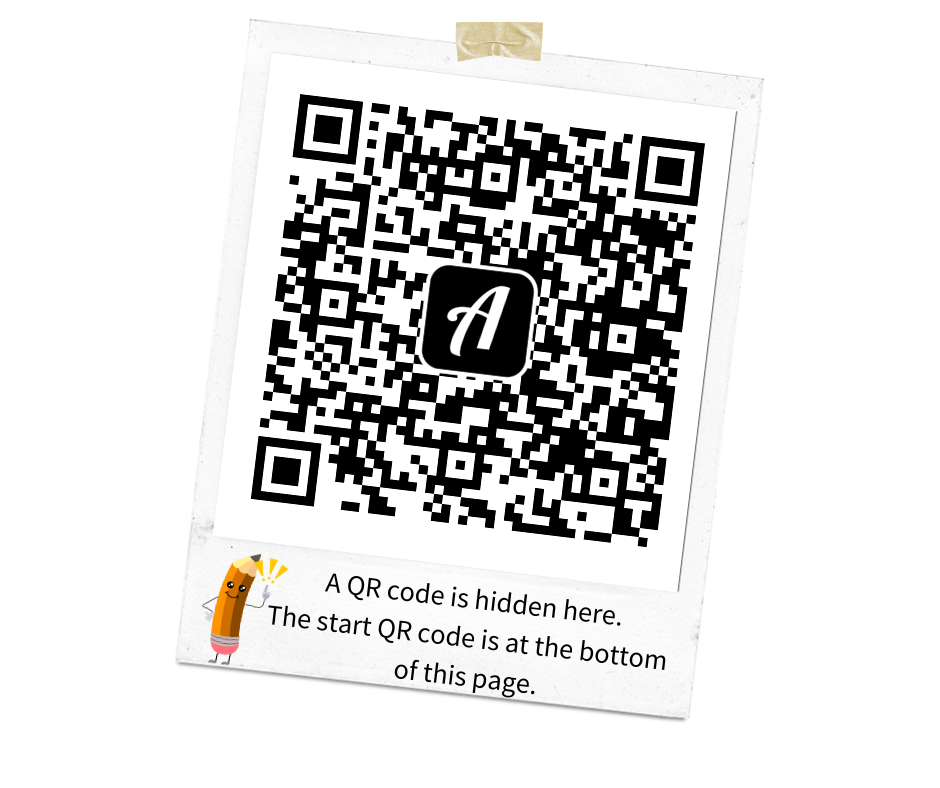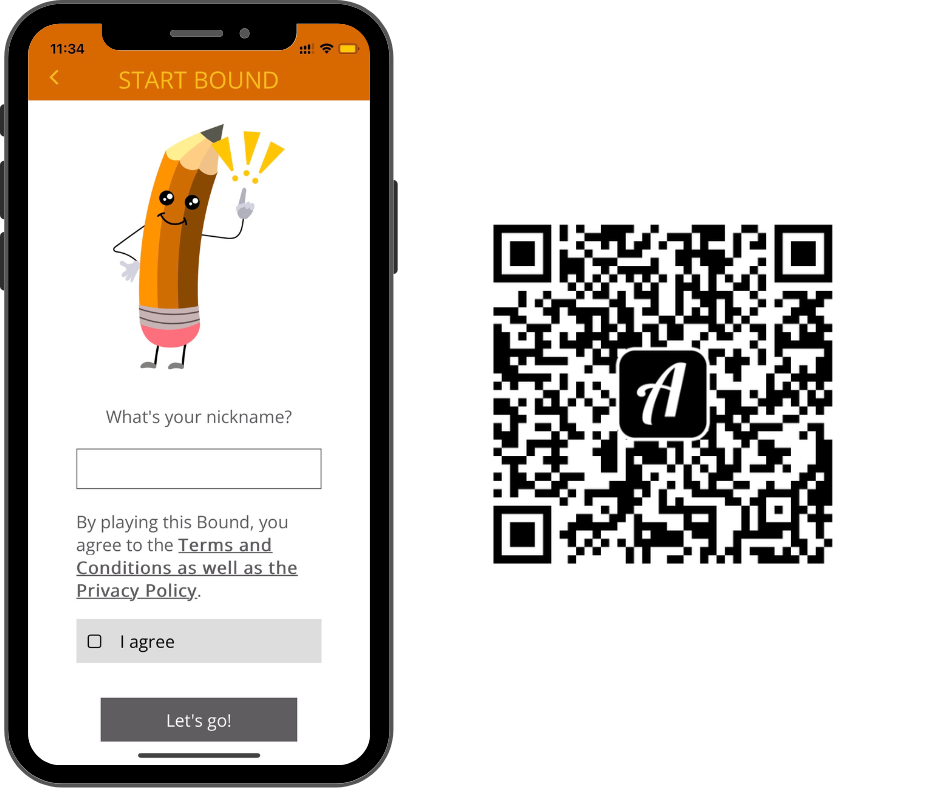Time and again, we at Actionbound are confronted with a question from our users. "Is Actionbound actually barrier-free?". Here is the blog post that answers the question and offers tips and tricks on how to reduce barriers. So we are not completely barrier-free, but our software still offers starting points on how to easily reduce barriers and design content that is suitable for the target group.

Let's take a closer look at this:
Actionbound can be used to create individual routes, rallies and games. The content is filled in by the creators in our Bound Creator. The players then play the Bound on their mobile devices. Depending on the target group, it is important to prepare the content in such a way that it is understandable and, of course, fun.
Actionbound is for EVERYONE! Inclusion is an important part of our society that aims to provide equal opportunities for participation and development. This also applies in the field of digital learning.
Here are some specific application tips:
READING
The contents of the Bounds can be read aloud by the players. At the beginning of the Bound, a person can be selected to read the contents to the group. Or there can be a game master responsible for reading.
A good option for solo players would be to read the text out loud and, for example, create practice videos with creative tasks. This way, you can review the reading success in the results afterward.
Unfortunately, there is no built-in read-aloud function in the app. However, the texts can be recorded by the creators of the Bound during the development phase and integrated into the individual elements as audio files. This allows players to listen to the texts while reading them. If necessary, the texts could also be narrated by professional speakers. This way, the Bound becomes an immersive auditory experience.
In general, when it comes to texts, it is advisable to pay attention to the following:
- Simple language
- Short sentences
- Paragraph breaks after each sentence
- Not too many sentences in one element
- Highlight words and sentences using Markdown formatting
With our extra feature, the Bound Styler, you have the option to customize fonts and background colors. If you are interested in this topic, get more information from our sales team.
LISTENING
Engage your players' senses and allow them to perceive your content auditorily. Give their eyes a little break and use the option to upload audio files. Don't just record texts, as mentioned above; use sounds or music as well.
Enhance your audio recordings with sound effects and music. Use the option to insert sounds in quiz tasks. For example, you can ask what sound is being heard or have players respond with sounds. You can find many licence-free sounds on the internet for free download. Alternatively, you can easily record sounds and voice messages with your smartphone and upload them to your media library. Give this option a try!
Making it even easier with audio files: Have you heard of our native audio player? We've written an entire blog article about this feature. With this setting, you can, for example, adjust the playback speed. Additionally, you have the option to continue playing the files while in standby mode. No more interruptions. If you're interested in this topic, click here.
PRESENTING & CREATING
Use pictures, illustrations, videos, audio files etc. when designing your Bound. Be creative in the design and avoid walls of text.
Present your content to your target group. Or almost (even) better:
Let your target group generate the content! Use the Task element and let your players get creative. How do they see the city? What is their favourite place? With photo and video tasks, you can address your players directly and involve them in what you want to convey. When the Bound is finished and the files are uploaded, you as the creator can find the files in your settings. Create a collage from the pictures and let the experience resonate.
TRY OUR INCLUSION-BOUND
Want to see what a Bound could look like? Then take a look at our example Bound. Here, the character Sidney Simple guides you through the Bound and explains the individual elements with a focus on inclusion. Download the Actionbound app for free and scan the starting code at the bottom of the page.

Have fun trying out and developing your Bound idea. We always appreciate your feedback. Do you have an exciting Bound project? Feel free to reach out to us! :)
Christoph Deeg
The world of libraries has changed for good over the past few years. With the advent of digital technologies, the rise of social media, and the emergence of new media such as eBooks, our image of the library has changed. The scope of its tasks and its role for the future are constantly growing. Gaming and the mobile internet put two more topics on the agenda. Their influence on libraries promises to be even more profound. Social media has long been shorthand for activities that mostly take place staring at a screen, but now a new definition of the library is emerging, one in which the library the digital and the analog are enmeshed. That means it’s time to think about the ways in which the digital and the analog influence each other in the library. In the process, we might discover whole new forms of library science.
 Using Actionbound in a modern library.
Using Actionbound in a modern library.
The use of apps that contain an element of gamification is especially interesting for libraries. Actionbound is an especially exciting example of such an app. A few examples and use cases have already been described, so I’m going to refrain from providing further approaches here. Instead, I’ll focus on the process of creating content. After all, it’s the content that determines whether or not the project is successful. When people hear or read this term, they often think of
Game design plays an important role in determining whether or not a project will succeed. When people hear or read this term, they often think of the visual design of a game. But game design doesn’t refer to the graphics. Instead, it mostly concerns the structure of the game. It doesn’t really matter whether you’re talking about a digital game or an analog game. You could even say a good game works without technical aid. So it’s not about the use of an app. Instead, it’s about leveraging technology to design a game that unites content, goals, and location to create added value for the user.
Game design is something of a phenomenon. On the one hand, game design is a very complicated field and it’s not for nothing that long-term work in the field requires a lot of training. On the other hand, it isn’t so hard to get started – after all, we’re surrounded by games. Most people, whether young or old, have played a wide variety of games. It doesn’t matter whether they’re digital games or whether they’re old-school analog board or card games – the best way to get started is to play yourself and observe how the game functions. I can’t illuminate every aspect of the subject in this article, but i’d like to provide a few tips that have always helped me in my own work.
- Games consist of a number of different components, for example storytelling, graphics, mechanics, rules, sound, and technology. You don’t need fireworks, but you should think about what components you want to include, why you’re leaving things out, and how you can compensate for those exclusions.
- Games don’t necessarily need to have complicated graphics, but you should think about their appearance. This includes both the app and the location where the game will be played. If you’re designing a game to be played in a library, then the library should function as a gaming site.
- Before you plan a tour or something similar, consider the entire location. What parts of the library can be part of a story? Are there areas where it can get a little louder? Do you have WiFi that enables thirty devices to establish a connection simultaneously?
- Come up with an exciting story that does more than simply provide a mental framework. Instead, it should create a connection between the different levels or stages of the game, even if the whole thing lasts half an hour or less.
- You should designate clear goals as well as clear feedback. That means the player should know how they are doing, as well as what they have to do.
- Think about whether there should be helpers. For example, a librarian might be designated as a helper, so that they could help the players keep going if they were to get stuck.
- Think about whether resources should be limited. Patrons might only be able to ask a librarian for help twice, for example.
- Think about forming teams to play the game together. Collective experiences are always more fun than playing by yourself. You can also create intergenerational teams, so that teachers or parents help students.
- You might also consider staging the whole thing as a competition. Competitions are always a good motivation.
- Allow for a variety of possible solutions and means of progressing. There’s nothing more boring than following a path that has been laid out exactly.
- Be careful not to make the game too hard or too easy. Tasks that are too simple or too difficult lead to frustration.
- Think about whether you want an employee of the library to be involved in the game. If a library worker will be involved, think about their role, including their role in the story.
These are just a few tips, which naturally can’t answer every question that might arise. As was said above, the technology is pretty much irrelevant, but with the right content you can create something special. Take plenty of time when developing the content and try different things out. It can also be helpful to include players in the design process. You could even take it so far that you simply provide the goals and content of a library tour and then develop the game with the players. Let the games begin!
This article is part of the publication „Die Bibliothek spielerisch entdecken mit der Lern-App Actionbound (German)
“. You can find the contents
here.
 „Die Bibliothek spielerisch entdecken mit der Lern-App Actionbound“ by Simon Zwick, Cynthia Lengler, Ilka Hamer, Annette Güzelmeriç, Eugenie Schatz, Dörthe Wiethoff, Florian Küpper, Christoph Deeg is licnesed under einer Creative Commons BY-SA 4.0 International license.
„Die Bibliothek spielerisch entdecken mit der Lern-App Actionbound“ by Simon Zwick, Cynthia Lengler, Ilka Hamer, Annette Güzelmeriç, Eugenie Schatz, Dörthe Wiethoff, Florian Küpper, Christoph Deeg is licnesed under einer Creative Commons BY-SA 4.0 International license.



 Using Actionbound in a modern library.
Using Actionbound in a modern library. „Die Bibliothek spielerisch entdecken mit der Lern-App Actionbound“ by Simon Zwick, Cynthia Lengler, Ilka Hamer, Annette Güzelmeriç, Eugenie Schatz, Dörthe Wiethoff, Florian Küpper, Christoph Deeg is licnesed under einer Creative Commons BY-SA 4.0 International license.
„Die Bibliothek spielerisch entdecken mit der Lern-App Actionbound“ by Simon Zwick, Cynthia Lengler, Ilka Hamer, Annette Güzelmeriç, Eugenie Schatz, Dörthe Wiethoff, Florian Küpper, Christoph Deeg is licnesed under einer Creative Commons BY-SA 4.0 International license.